Today's Patreon-fueled shout-out is for the Plant Northern Piedmont Natives Campaign, an initiative that wants you to grow native plants in yards, farms, public spaces and gardens in the northern Piedmont. Native plants provide habitat, food sources for wildlife, ecosystem resiliency in the face of climate change, and clean water. Start at the Plant Northern Piedmont Natives Facebook page and tell them Lonnie Murray sent you!
On today’s installment:
Charlottesville City Schools begin official consideration of names for Clark and Venable elementary schools
The Green Business Alliance launches on a mission to meet greenhouse gas reduction goals ahead of schedule
Legislation is signed in Christiansburg for an authority to work towards a new passenger rail to the New River Valley
To begin today’s installment, U.S. 250 at Afton Mountain is still closed, three days after a rockfall began. There’s no timetable for when the roadway might reopen.
“On Wednesday, rocks, soil and debris continue to slide down the steep slope into the roadway,” reads a press release. “Geologists and engineers with the Virginia Department of Transportation are continuing their assessment of the site and the extent of the slide area. Then they can determine how to safely remove debris from the road as well as unstable material still on the slope above the road. The slope must also be stabilized before the road can be reopened to traffic.”
Stay tuned.
Sixteen companies and nonprofits in the greater Charlottesville area have launched the creation of something called the Green Business Alliance as a way of providing leadership on the way toward meeting the community’s goals to reduce greenhouse gas emissions.
Susan Kruse is the executive director of the Community Climate Collaborative, which goes by C3.
“This is the decade where we must act to prevent the most catastrophic impacts of climate change,” Kruse said. “Our nation, our Commonwealth, and our community have all set ambitious goals to reduce greenhouse gas emissions. Yet we cannot reach those goals without working together in our homes, in our schools, and in our businesses.”
Kruse said C3 selected these businesses based on their past commitments to energy efficiency, and a dedication to being bold.
“I am pleased to announce their collective greenhouse gas emissions by 45 percent by 2025,” Kruse said. “That is five years faster than the goal set by the city of Charlottesville and Albemarle County and well ahead of the Commonwealth’s goal to hit net zero by 2045.”
Kruse estimated that if they meet these goals, that will reduce 13,156 metric tons of carbon dioxide equivalent. The groups selected provided three years worth of energy data and have agreed to continue submitting that information to C3 to audit the data going forward.
One of the groups is the CFA Institute, and Kelli Palmer was on hand to speak on their behalf. Palmer is the head of Global Inclusion & Diversity and Corporate Citizenship at CFA and she remarked at being at an in-person event.
“This is the first time I’ve been in community in real life with other people in over a year so that alone is a cause for celebration,” Palmer said.
Palmer said CFA’s mission is to be a worldwide leader, and participation in greenhouse gas reduction at its headquarters is consistent.
“It is our mission, CFA Institute that is, to lead the investment profession globally by promoting the highest standards of ethics, education, and professional excellent for the ultimate benefit of society,” Palmer said.
Another member of the Green Business Alliance is Sentara Martha Jefferson, which moved from the city of Charlottesville to Albemarle County nearly ten years ago. Catherine Hughes is the executive director.
“We almost doubled our physical plant from approximately 300,000 square feet at our downtown location which Kelli [and CFA Institute] now resides in to 600,000 square feet approximately and we were able to do so without increasing our energy consumption,” Hughes said. “That came with a lot of work. Every decision as far as building the building is part of that.”
The Tiger Fuel Company may not be the one of the first that jump to mind when you think of green businesses, but President Gordon Sutton is on board to prepare his firm for the future.
“Our business is in large part focused on the distribution of fossil fuels which makes me somewhat of an outsider in this setting,” Sutton said. “I’m proud to tell you however that we have for years now been working on ways to reduce our carbon footprint. One of the compelling ways we have achieved that has been through embracing solar and installing solar arrays on our facilities.”
Sutton said Tiger Fuel was so satisfied with the results that decided to get into the business.
“We have decided to completely immerse ourselves in the industry by acquiring a small solar company with a national footprint but roots right here in Virginia,” Sutton said.
That company is Altenergy, which Sutton said has over 16 years of experience and has installed 21 megawatts of solar generation capacity across ten different states. Sutton said he knows that reduction of greenhouse gases will require dramatic reductions in or cessation of the use of fossil fuels.
The final Green Business Alliance member who spoke at the event was Liza Borches, the President and CEO of Carter Myers Automotive.
“We all know that transportation is the largest contributor to greenhouse gas emissions in the United States,” Borches said. “And as a part of this industry, we have a choice. We can put our head down, keep pushing forward selling a lot of cars, and not be proud of what our industry is doing to contribute to our climate impact, or we can pull up a chair to the table, be a part of the conversation and help find the strategic solutions that we need for our future.”
Borches said part of her company’s role is to educate consumers about the benefits of alternative-fuel vehicles, and this year she and her staff helped push for Virginia legislation known as the Clean Cars Act which directs the State Air Pollution Control Board to create a program for low-emissions and no-emissions vehicles.
It was at about this point in the recording that the wind began to become an issue. Governor Ralph Northam was also in attendance to watch as members of the Green Business Alliance received certificates indicating their participation in the program. Northam is in his last year and said he has tried to get something done while in office.
“We’ve had these climate commissions in Virginia and we’ve listened to the data and we’ve said at the meeting that we need to take action, and we really never have,” Northam said. “The past few years we have been able to work together and really understand what we’re up against in society.”
It was around this point in the recording that the wind picked, and I would be curious to know how much energy that would have generated. So, we’re going to wait until later in the program to hear more from Northam on the story from Christiansburg.
The Charlottesville Public School system has begun the process of evaluating the names of two elementary schools to see if they should be changed. On Monday, the Schools Naming Committee held a community forum with breakout sessions on the appropriateness of the current names of Clark Elementary School and Venable Elementary School. In all, there are ten schools for the city to review, and the process will go from oldest to newest. Beth Baptist is interim director of student services and achievement.
“Clark and Venable are our older schools so those are the schools that we are starting with,” Baptist said. “We are not on a timeline for this project. We want to do it right.”
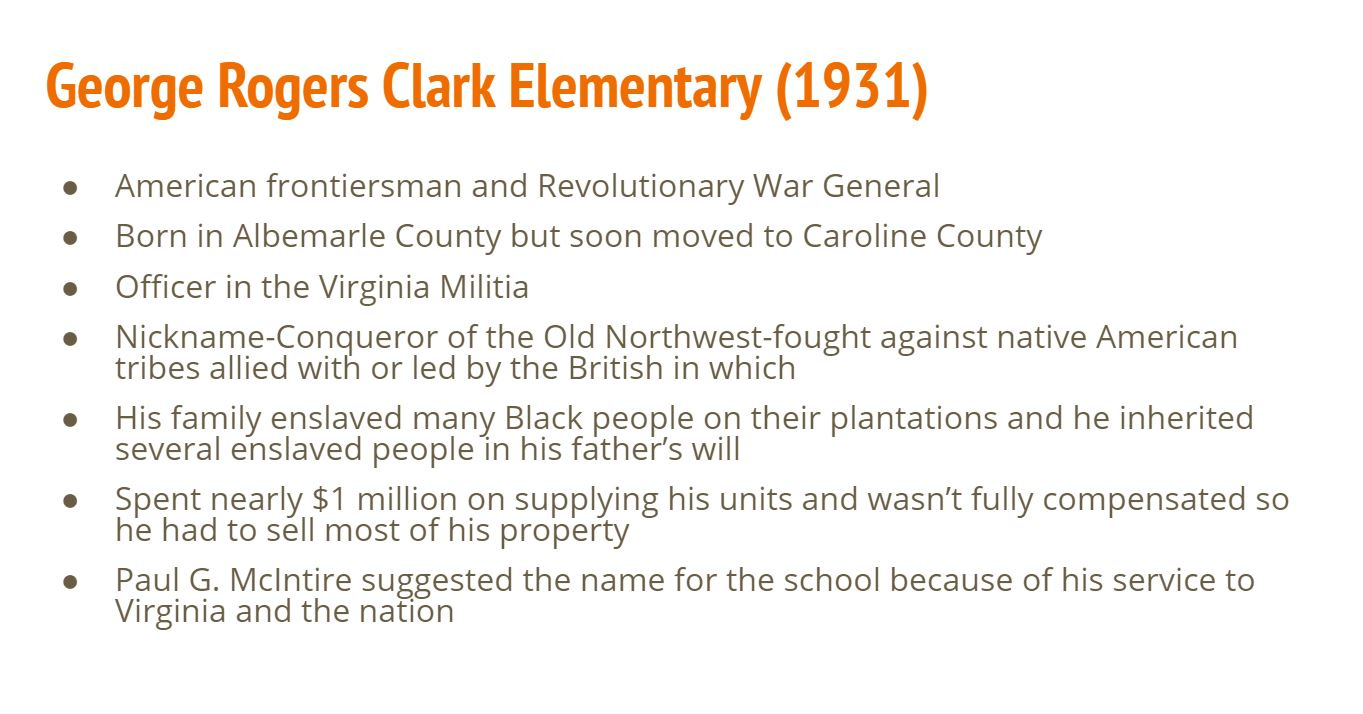
Committee member Phil Varner prepared information for the break-out groups to consider before they spent time in breakout areas. He said he began research two years ago after watching a presentation from filmmaker Lorenzo Dickerson about the work that went into one of his films.
“So he had done some work on researching Black schools pre-desegregation in Albemarle for his documentary Albemarle’s Black Classrooms ,” Varner said. “And sort of almost tangentially to that there was work and a bit in his presentation before the Albemarle School Board about Paul Cale, who previously had an elementary school named after him.”
What is now known as Mountain View Elementary had been named after Paul Cale, who served as superintendent of Albemarle Schools from 1947 to 1967 according to a September 2019 article by Katherine Knott in the Daily Progress. Superintendent Matt Haas said at the time he wanted the school renamed because Cale did not act swiftly to fully integrate schools after the Brown v. Board of Education ruling in 1954.
“And that got me thinking who are our elementary schools named for, and surprisingly it was hard to find good information,” Varner said. “Surprisingly it was hard to find good information. For many of the people they were named after, I could literally only find a sentence that described what they taught and where. Clark and Venable were famous in their own right but don’t really have a very strong connection with the actual school system.”
Varner said naming schools memorializes a person in the same way that putting up a statue memorializes a person. He said philanthropist Paul McIntire, who donated Confederate statues, also played a role in naming Clark after George Rogers Clark, a Revolutionary War general who inherited several enslaved people as property.
“They were always done by whoever the dominant group was in Charlottesville, whoever held the power and using these names to enforce and entrench their power and I really wanted to see this devolve into letting the people who are actually affected by this, students, teachers, parents in the buildings, make these decisions about what their school represents and who it is named for,” Varner said.
To learn more about the names of the ten Charlottesville school facilities, visit the website correctingthenarrative.org to learn more. To keep up with the project, visit the page on the Charlottesville School system.
You’re listening to Charlottesville Community Engagement. In this subscriber supported public service announcement, over the course of the pandemic, the Albemarle Charlottesville Historical Society has provided hours and hours of interviews, presentations, and discussions about interpretations and recollections of the past. All of this is available for you to watch, for free, on the Historical Society’s YouTube Channel. There’s even an appearance by me, talking about my work on cvillepedia! Tune in!
Northam signs legislation to create authority for New River Valley rail
Three hours after being present in Albemarle at the launch of the Green Business Alliance yesterday, Governor Northam traveled southwest to Christiansburg to sign legislation authorizing the creation of a new authority to help build a new railway station to serve the New River Valley. Mike Barber is the mayor of the Town of Christiansburg.
“The Town of Christiansburg is proud to have been selected for the site for the future passenger rail station,” Barber said. “We believe this station will meet many of the town’s current goals and priorities in relationship to transportation, connectivity, economic development and promotion of regional tourism, not just in Christiansburg but in the entire New River Valley.”
Barber said rail has played an important role in history in the history of southwest Virginia, but the last passenger rail train traveled through in 1979. In recent years, efforts have been underway to bring one back, and the goal is to eventually extend the Northeast Regional Service that terminates in Roanoke to Christiansburg. The Northeast Regional Services dates back to October 2009 as part of a three-year pilot project that has been wildly successful.
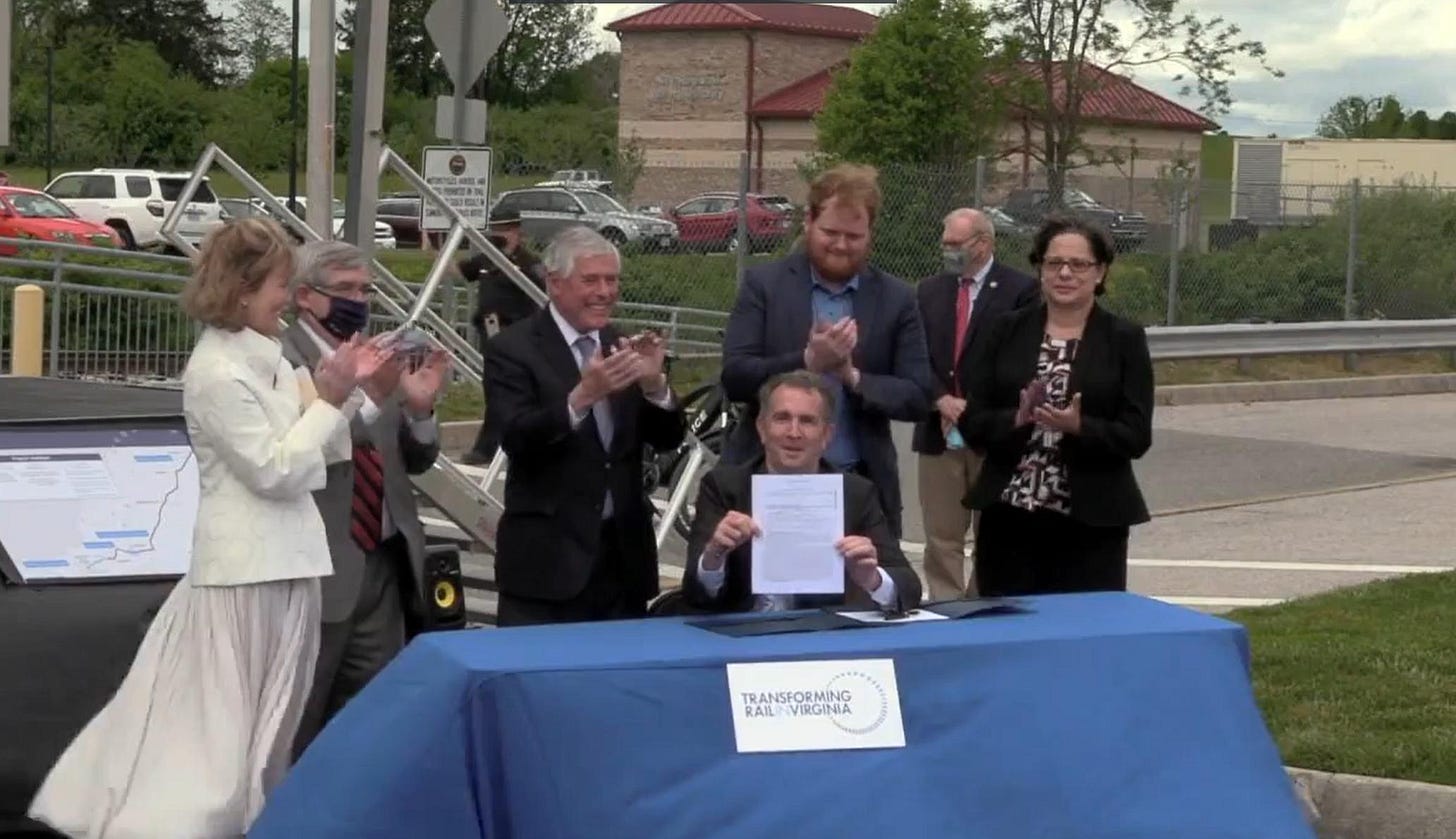
Shannon Valentine is Virginia’s Secretary of Transportation.
“And over the next 12 years, so much has changed,” Valentine said. “Virginia sponsored rail has grown from one route to four, one train to six round-trips, [and yearly] ridership from 125,000 to 971,000.”
Valentine said the route is one of the most profitable in the United States. The original cost for the three-year pilot cost $17.5 million. The Northam administration has decided to try again to make an investment to give people a way to get around the state without driving.
“When we started three and a half years ago we had a lot of discussions and said, you know, we really can’t pave our way out of congestion across this great Commonwealth and we’ve got to look at other means of transportation and so certainly rail and transit have been part of that.”
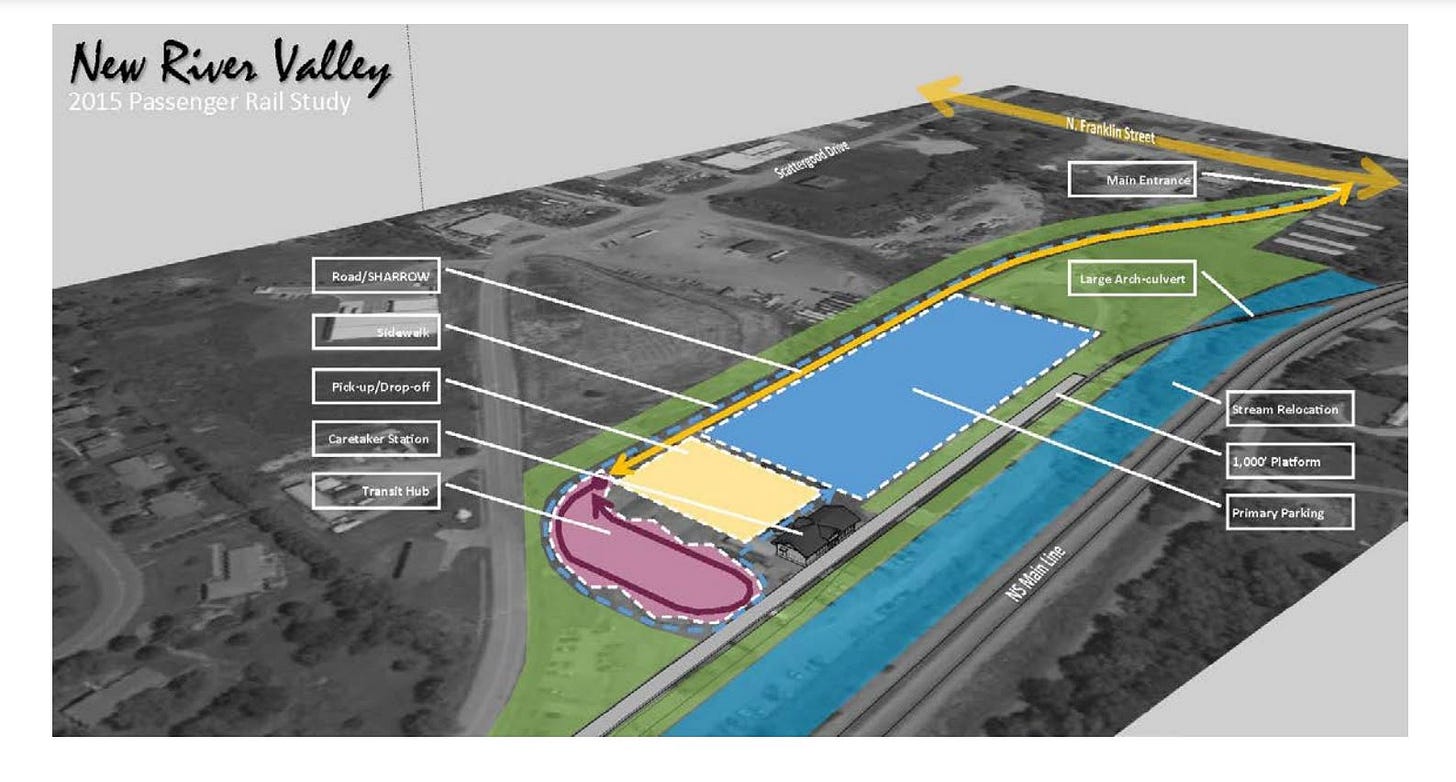
The creation of the New River Valley Passenger Rail Authority is just one part of the infrastructure improvements that will be required to get the trains there on time.
“Today we are making a commitment to invest $257 million to create this vital connection between southwest Virginia and other parts of the Commonwealth and beyond,” Northam said. “And yes while we are bringing rail to Blacksburg and Christiansburg, we’re not finished and we want to take it all the way out to Bristol to open it up to the great southwest .”
When regular passenger service eventually begins between Charlottesville and Richmond, it will do so on tracks owned by the state of Virginia. Now the state is working to secure right of way in the western part of Virginia where Norfolk Southern owns the lines to make sure passenger and freight can coexist.
“Through the western rail initiative, we will acquire approximately 28.5 miles of the Virginia line from the Salem crossovers west of Roanoke, to Merrimac and Christiansburg,” Northam said. “We’ll make improvements to the Roanoke yard, and invest in infrastructure upgrades along the 29-81 corridor to accommodate the new service… And up at the northern end of this line we’ll build a seven-mile siding from Nokesville to Halverton creating a continuous two-track corridor for 22 miles from Manassas to Remington.”
Northam said a second daily train on the Northeast Regional Service between Roanoke and D.C.’s Union Station will begin in 2022.
“When improvements are completed in 2025, both trains will be extended to the New River Valley,” Northam said.
Sixth District Congressman Morgan Griffith was also present at the signing of the legislation. He said he had initially been skeptical of the idea but came around when he saw ridership numbers continue to grow.
“I have to confess and anybody who studies the record would know that I missed the train in Lynchburg and I missed the train in Roanoke, so I wanted to make sure I got on in Christiansburg,” Griffith said.
Delegate Chris Hurst of the 12th District was the patron of legislation that created the authority. He credited the group New River Valley Passenger Rail for their work in moving the idea from concept to an official entity that can now work to have the station in place. He’s also a member of an advisory board overseeing improvements on Interstate-81 Advisory Board. That includes some funding for the western rail initiative.
“We are really addressing things up and down the entire Interstate-81 corridor with different modes of transportation,” Hurst said. “It was also mentioned in our 81 advisory committee the other week that we are going to be increasing capacity for the Virginia Breeze bus system which has been incredibly popular for us along the 81 corridor. We are doing amazing things in the New River Valley.”
Later this month, Amtrak is expected to lift their restrictions on capacity on their trains. Are you planning a journey? I’d love to hear about it if you do have tickets, or want to? Let me know!
Want to support the show? Here are some ways! Remember, Ting will match your contribution.
Support my research by making a donation through Patreon
Sign for a subscription to Charlottesville Community Engagement, free or paid
Tell your friends and family!

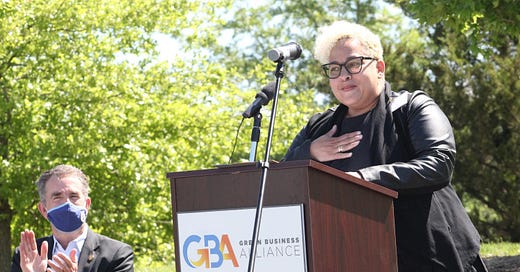





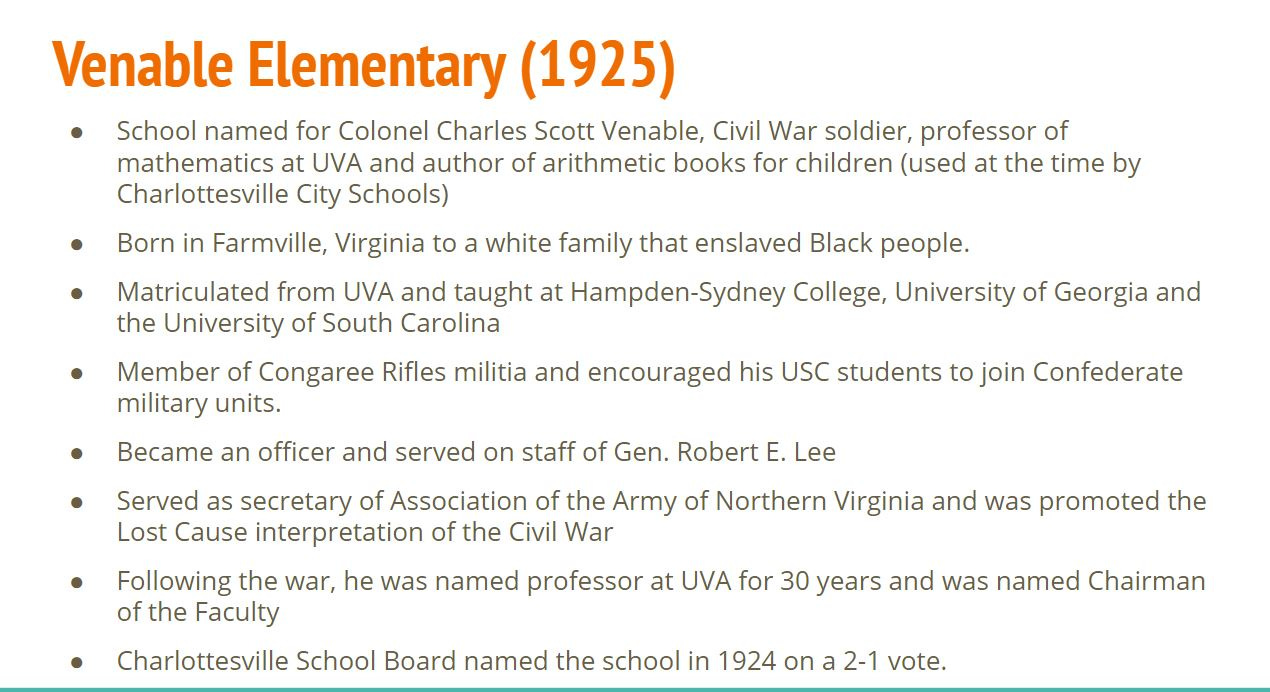









Share this post